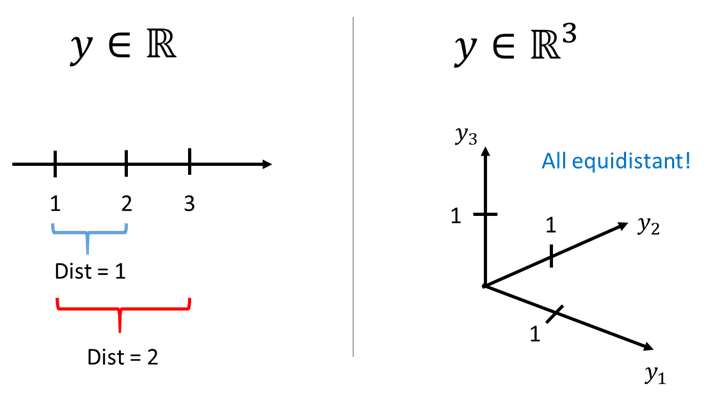Data pre-processing
Recurrent Neural Networks (RNNs) for Language Modeling with Keras

David Cecchini
Data Scientist
Text classification
Applications of text classification:
- Automatic news classification
- Document classification for businesses
- Queue segmentation for customer support
- Many more!
Changes from binary classification
What change from binary to multi class:
- Shape of the output variable
y - Number of units on the output layer
- Activation function on the output layer
- Loss function
Changes from binary classification
Shape of the output variable y:
- One-hot encoding of the classes
# Example: num_classes = 3
y[0] = [0, 1, 0]
y.shape = (N, num_classes)
Number of units on the output layer:
# Output layer
model.add(Dense(num_classes))
Changes from binary classification

Changes from binary classification
Activation function on the output layer:
softmaxgives the probability of every class
# Output layer
model.add(Dense(num_classes, activation="softmax"))
Loss function:
- Instead of binary, we use categorical cross-entropy
# Compile the model
model.compile(loss='categorical_crossentropy')
Preparing text categories for keras
y = ["sports", "economy", "data_science", "sports", "finance"] # Transform to pandas series object y_series = pd.Series(y, dtype="category")# Print the category codes print(y_series.cat.codes)
0 3
1 1
2 0
3 3
4 2
Pre-processing y
from tensorflow.keras.utils import to_categoricaly = np.array([0, 1, 2]) # Change to categorical y_prep = to_categorical(y) print(y_prep)
[[1. 0. 0.]
[0. 1. 0.]
[0. 0. 1.]]
Let's practice!
Recurrent Neural Networks (RNNs) for Language Modeling with Keras

